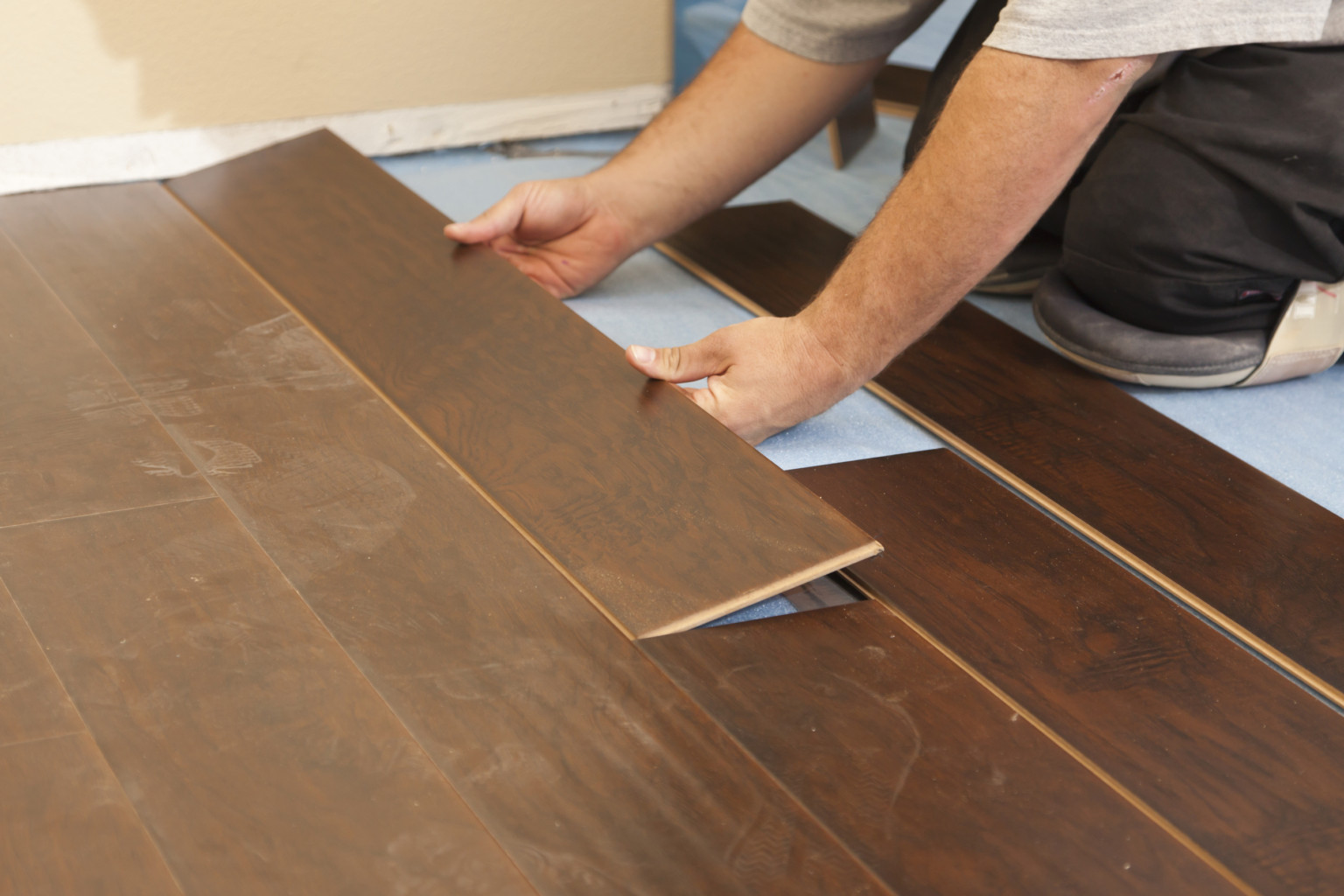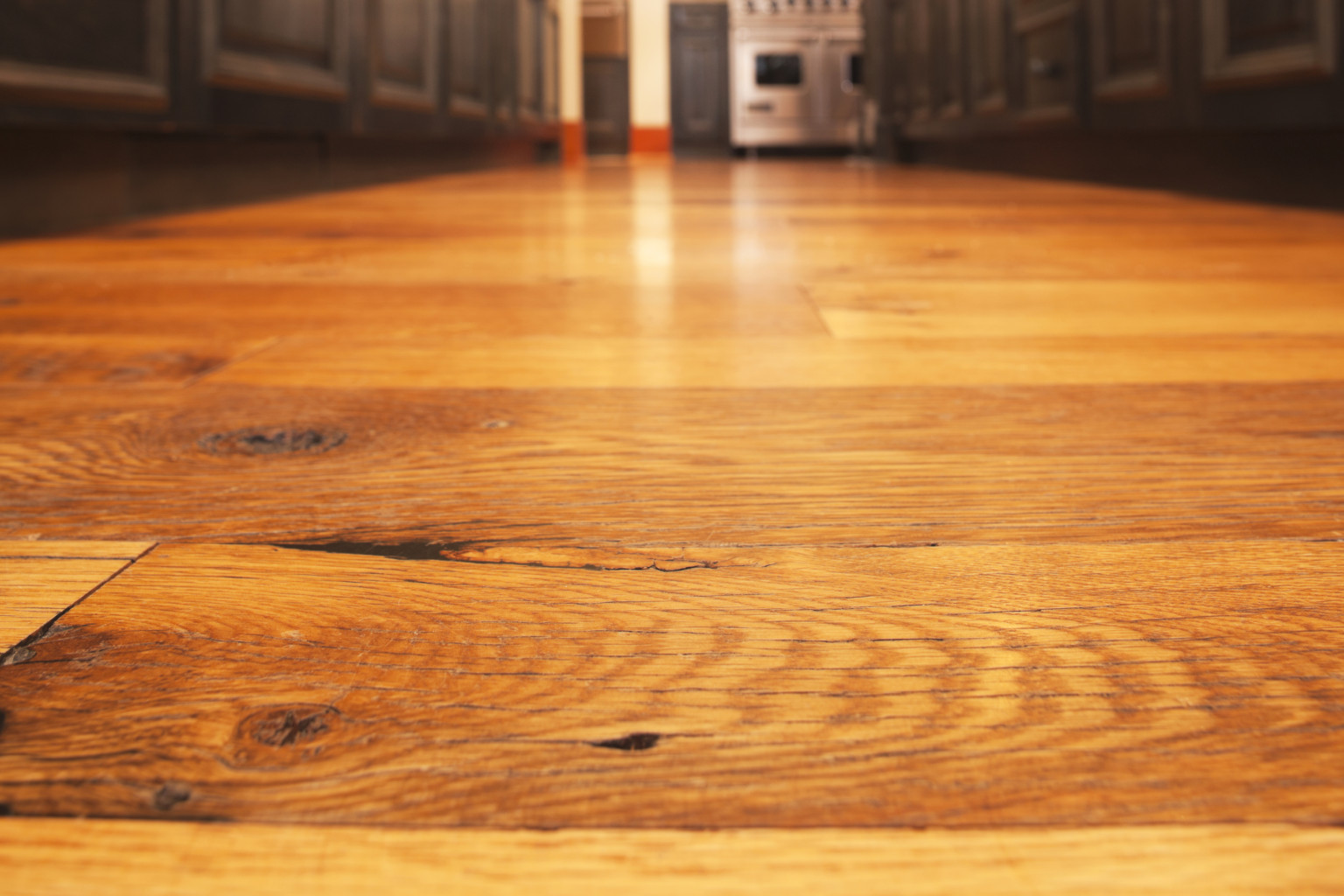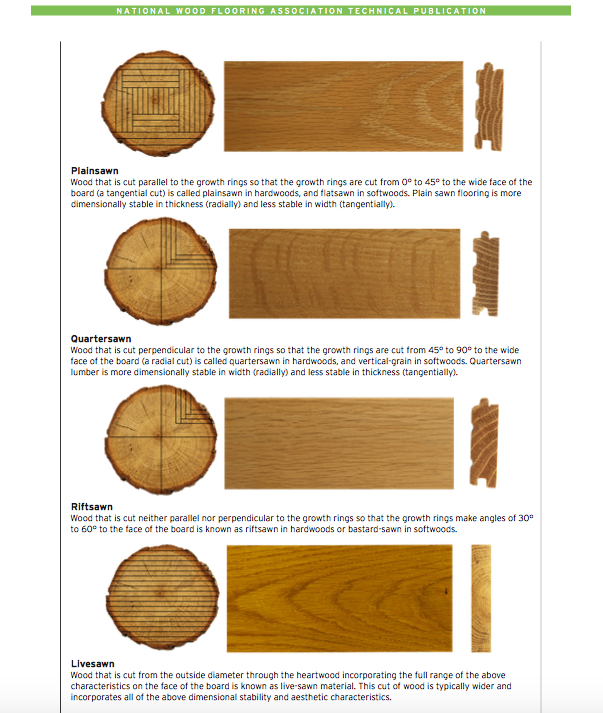Which types of wide plank flooring hold up best to humidity fluctuations? This is an important question to ask particularly when dealing with wide plank hardwood flooring because the excess width makes the planks more susceptible due to changes in humidity.
If you’re concerned about wear from foot traffic, you’ll have to look at the Janka hardness rating of the species you’ve chosen in order to see how it will fare. However, the ability to withstand humidity changes requires a different set of criteria. A species with a high Janka hardness rating is not guaranteed to have a high level of dimensional stability, which is needed for withstanding fluctuations in humidity without suffering damage, especially when wide planks are concerned.
To determine whether a floor will hold up to humidity changes without cupping or extreme gaps, you have to look at the the type of cut (live-sawn vs. rift-and-quartered, etc.) and type of flooring (engineered vs. solid).
Here are the different qualities of a floor and an explanation of their impact on dimensional stability.
Different types of milling: How stable are they?
Live-sawn flooring: This type of flooring is produced when each plank is cut straight off of the log in a single direction. The orientation of the log is not changed when the planks are cut. Because of this, the flooring displays the full range of the log’s grain, including the iconic cathedral grain, and includes both heartwood and sapwood. This milling technique is the most efficient and eco-friendly of the
four because the entire log is utilized. Because at least a third of the planks making up live-sawn floors are quarter-sawn, this type of flooring is stable.
Plain-sawn flooring: This is the most common type of milling in the United States, in which the board is cut and then the log is turned 90 degrees before being cut again. This involves cutting the lumber into parallel planks through the center, resulting in beautiful graining patterns. Because the wood is cut tangential to the growth rings of the tree, this is not a very stable cut and may be prone to cupping when excessive moisture is present. In short, this is not a good cut for wide plank floors.
Quarter-sawn flooring: This cut is produced by quartering the log lengthwise, which results in wedges which intersect the board face at 60- to 90-degree angles. This produces a straight, striped grain and creates distinctive ray and fleck patterns in red and white oak. It is difficult to produce a 100% quarter-sawn wide plank floor because especially large logs are required for such wide floors.This cut produces dimensionally stable flooring and is generally resistant to moisture fluctuations.
Rift-and-quartered flooring: This is the least common type of milling for hardwood floors because it produces a substantial amount of waste. The planks are milled perpendicular to the growth rings of the tree, which produces a straight grain pattern with no flecking. The log’s growth rings range from 30-60 degrees to the face of the board. These floors are rather expensive, but rift-and-quartered floors are the most dimensionally stable out of the four.
Given the different qualities of each, the best choice for wide plank floors if you are concerned about cupping or gapping as the humidity fluctuates throughout the year is rift-and-quartered flooring, but quarter-sawn and live-sawn flooring are also reliable choices.
Solid versus engineered wide plank flooring

Solid wide plank floors are less dimensionally stable than engineered wide plank floors, therefore it is a safer bet to choose engineered wide plank floors if your flooring is to be installed in places where the humidity fluctuates significantly throughout the year, or in a below-grade environment such as a basement.
There’s simply nothing like a solid wood floor––there’s no doubt that they are extremely aesthetically pleasing. You can use solid wide plank wood flooring if you choose a stable cut and a dimensionally stable species. Some of the more dimensionally stable domestic wood species include hard maple, white oak, and white ash. Exotic species are often more dimensionally stable than domestic species. Pairing this with a dimensionally stable cut like rift-and-quartered or quarter-sawn flooring is usually a safe bet.
With so many factors involved, how do you find the right floor?
If you’re trying to figure out which floors to install in your home, it’s always a good idea to ask for help! There are so many factors involved in choosing the right wide plank floor. The best choice will depend on your lifestyle, the area in which you live, and your desired style.
A hardwood flooring professional will help you determine the best type of flooring for your specific situation.
Browse our selection of wide plank hardwood floors to get some ideas and start finding the right fit!

